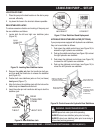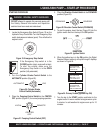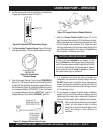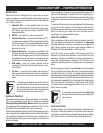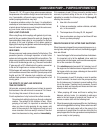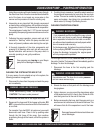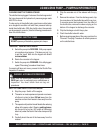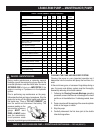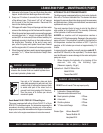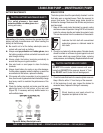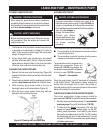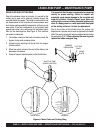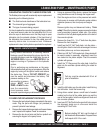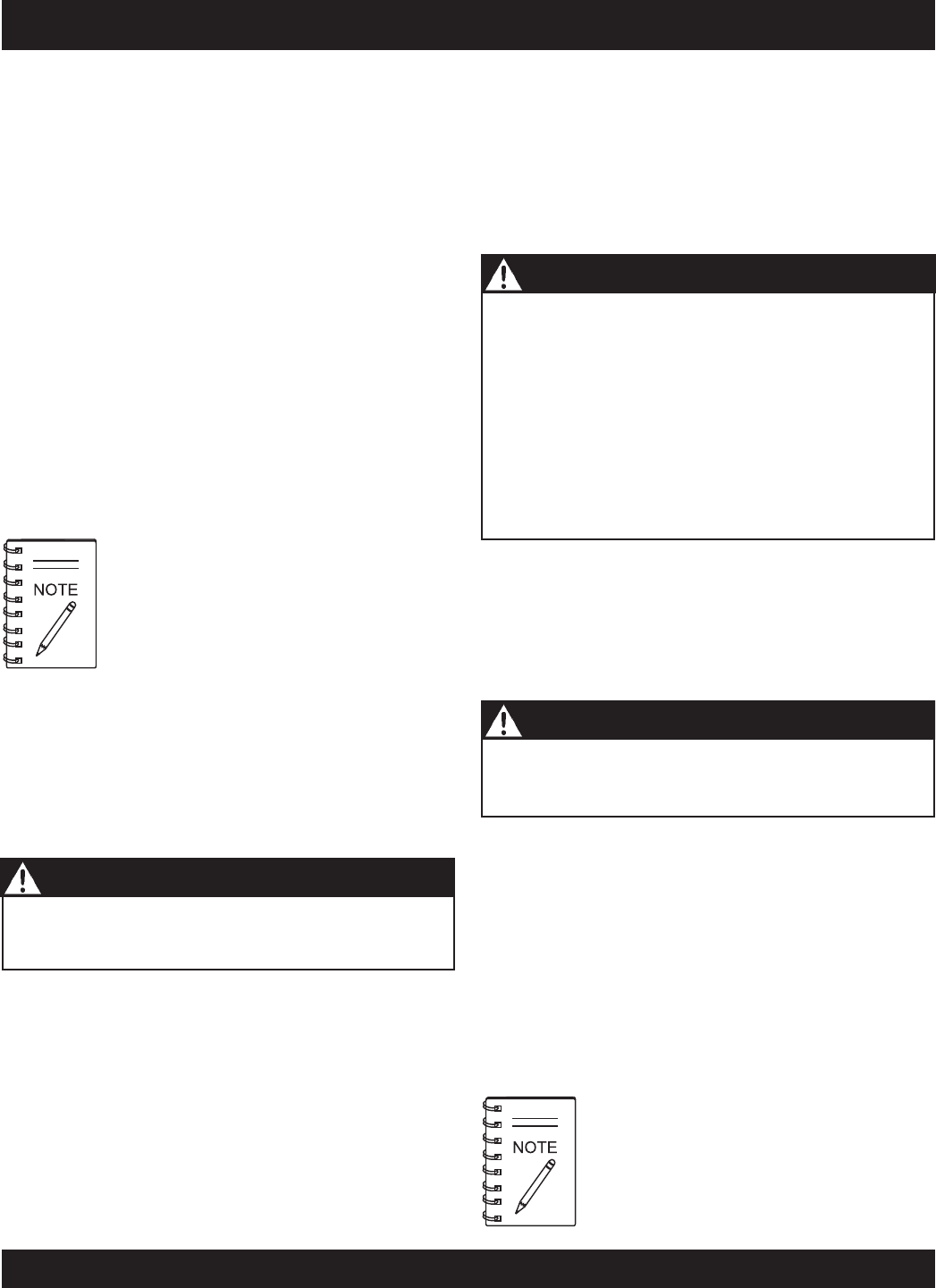
PAGE 34 — MAYCO LS400/LS500 PUMP — OPERATION AND PARTS MANUAL — REV. #6 (09/19/11)
CLEARING THE SYSTEM AFTER MIX SET UP
If, for any reason, the mix should set up in the system, the
following procedure is suggested:
1. Disconnect the hose from the pump and wash the pump
out immediately.
2 Reconnect the hose and fill the hopper with water.
3. Reconnect the hose and fill the hopper with water. DO
NOT try to push all the concrete out of all of the hose lines
at one time.
For example: If you had 200 ft. of system out, you would
disconnect each hose. Clean it out by pushing water
through the first hose off the pump, then continue
progressing through all the hoses, until all the system is
clean.
4. If waiting time is excessive, it would be wise to wash out
the pump and hoses and start over when the new truck
arrives. This can be avoided by being observant to the
pump and system, also taking into consideration the
above actors (A through D) affecting the mix.
When disconnecting hoses, use EXTREME
CAUTION! The hose is under pressure!
WARNING - HOSE/LINE PRESSURE
Using this procedure will make it easier to pump through
the clean hose. Note: Once the concrete has reached the
end of the hose, do not apply any more water in this
manner as this procedure is used for starting only.
6. Hose sizing is very important: We strongly recommend
on harsh mixes, vertical pushes, stiff concrete, shotcrete,
long pushes, that a 2 -1/2” line be used as far as possible.
The advantages of using the 2 -1/2” line are improved
pumpability, less pumping pressure and less wear on the
pump.
7. Following the pump operation, proper wash out of all
materials or “build-up” within the pump manifold and
hoses will prevent problems when starting the next job.
8. A thorough inspection of the drive components and
greasing of all bearings after each job will ensure ad-
equate lubrication and service to the pump which is
normally operating in wet, gritty conditions.
Over-greasing any
bearing
on your Mayco
pump will not damage the bearing.
LS400/LS500 PUMP — PUMPING INFORMATION
If a blockage occurs in a hose,
walk the hose
until you find
the point of trouble. The hose will be soft immediately past the
blockage. To clear the blockage:
1. Disconnect the hose at the first coupling past the
blockage.
If you repeatedly pull the throttle all the way out and
try to force your pump to push through
blockages
due to separation of material in the hose or manifold,
you will soon have breakdowns and costly repairs which
are not covered under warranty.
If a blockage occurs, find where it is and clear it before
further pumping. DO NOT increase the engine speed
to clear the blockage. Increasing the engine speed
will only compound the problem.
WARNING - BLOCKAGES
CLEARING CONCRETE BLOCKAGE
Damaged hoses with internal restrictions can
cause blockages.
Use extreme care! The hose line is under
pressure
and can cause serious injury.
WARNING - HOSE LINE PRESSURE
2. Elevate the hose at that point with the blockage area
hanging down.
3. Using a hammer, you can pound the downstream edge
of the packed area until it is free to flow. Shake all of the
sand and gravel out to the end of the hose.
4. Before reconnecting the hose, start the pump and run a
small amount of concrete out to the end of the hose. This
will assure that all of the separation is out of the hose.



